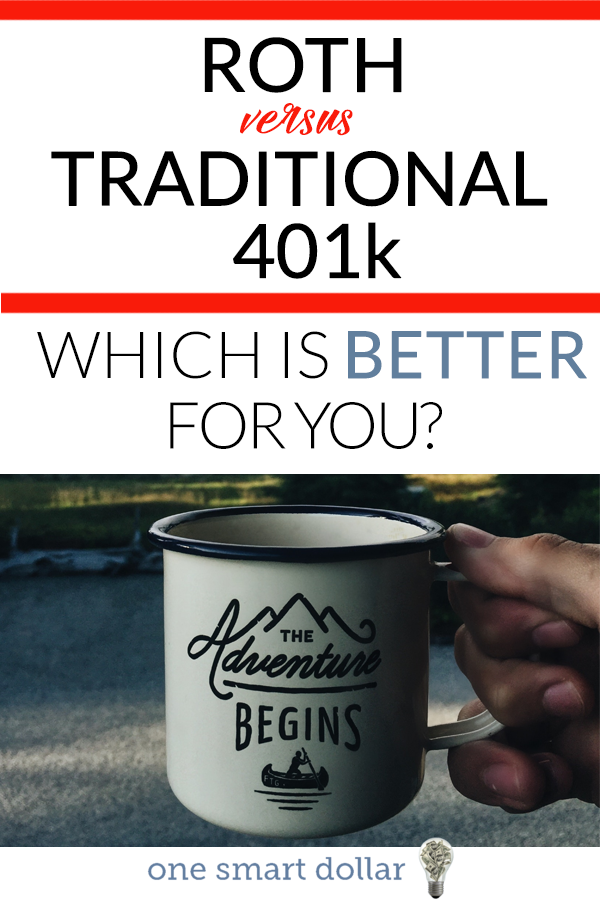
Contributing to your retirement plan is a great step in building a solid financial future. You probably already know the basic building blocks of investing success: invest as early as possible and take advantage of any match your company offers. Beyond that, you’ll need to decide what type of 401(k) plan is right for you. Most 401(k) retirement plans offer two options: Roth or traditional. Here’s how to figure out which option is best for you.
What’s the difference Between a Roth vs Traditional 401k?
In most cases, Roth and traditional 401(k)s operate very similar. Both are likely to be administered by the same financial company, they are designed to be funded from paycheck withholdings, and the annual contribution limits for both types are the same. The only significant difference is related to taxes.
A Roth 401(k) is funded with money that you’ve already paid taxes on. Anything you contribute will be taxed as normal earnings before it hits your account. Once it’s there, your investment grows tax-free. That means that you don’t have to pay taxes on your earnings. Once you hit retirement age, your qualified withdrawals, including the earnings, come out tax-free.
A traditional 401(k) is opposite, tax-wise. Your contributions into a traditional 401(k) are made with pre-tax money, so contributions up to the annual limit don’t count toward your taxable income. Money that you invest in your traditional 401(k) is allowed to grow tax-sheltered within your account, so you don’t have to pay taxes on earnings as you go. However, once you hit retirement age, your qualified withdrawals are taxed as ordinary income.
Also Read: Betterment Review – A Better Investment Method
To sum it up, Roth 401(k)s are built to have tax advantages as you withdraw, while traditional 401(k)s are built to bring tax advantages as you invest. The good news is that deciding which is better for you isn’t as tough as it sounds.
When to Choose a Roth 401(k)
A Roth 401(k) makes the most sense if you’re currently in a lower tax bracket. A Roth tends to make more sense when you’re younger and just starting out, because most people in that situation expect to be in a higher tax bracket during retirement.
Here’s an example: let’s say that you plan to invest $1,000 in your 401(k) this year, when you’re at a 25% tax bracket. In a Roth scenario, you’d pay your 25% tax rate and invest your net of $750. If that $750 doubles by your retirement age, you can withdraw the full $1500 tax-free from your Roth, no matter what your tax bracket. The strategy with a Roth is to pay taxes now so that you don’t have to pay them later.
When to Choose a Traditional 401(k)
A traditional 401(k) makes the most sense if you’re currently in a higher tax bracket than you expect to be in when you retire. You can avoid paying taxes on your contributions because you’ll pay taxes on your qualified withdrawals once you hit retirement age.
Also Read: 3 Ways Robo-Advisors Reduce the Cost of Investing
For example: let’s say that you plan to invest $1,000 in your 401(k) this year, when you’re at a 33% tax bracket. In a traditional 401(k) scenario, you’d invest the full $1,000 into your 401(k) and avoid paying $333 in taxes this year. If that $1,000 doubles by your retirement age, you can withdraw the full $2,000 from your 401(k) at your current tax bracket. If that bracket is 25%, you’d get a payout of $1,500 after taxes. The strategy with a traditional 401(k) is to avoid a higher tax rate now while paying (hopefully) lower taxes later on your investments and earnings.
Why Not Both?
Like all investments, choosing a 401(k) requires a bit of speculation. Picking just one 401(k) option may sound great to those who expect tax brackets to stay relatively level from now until retirement, but everyone would be in for a shock if tax rates in the future were actually lowered or raised significantly. Since it’s impossible to know how taxes might change 25 or 30 years from now, some financial experts suggest contributing to both types of accounts. As long as you stay within the annual contribution limits, you can diversify your 401(k) accounts the same way you diversify with any other type of investment. You’ll get to lower your current taxable income while also giving yourself some flexibility to handle future potential changes to the tax rate.
Overall, the goal is to save for retirement so you’ll be able to live securely and comfortably. Each 401(k) tool can help you get there, so understanding your current and future financial situations is the best way to decide which is the right tool for you.

